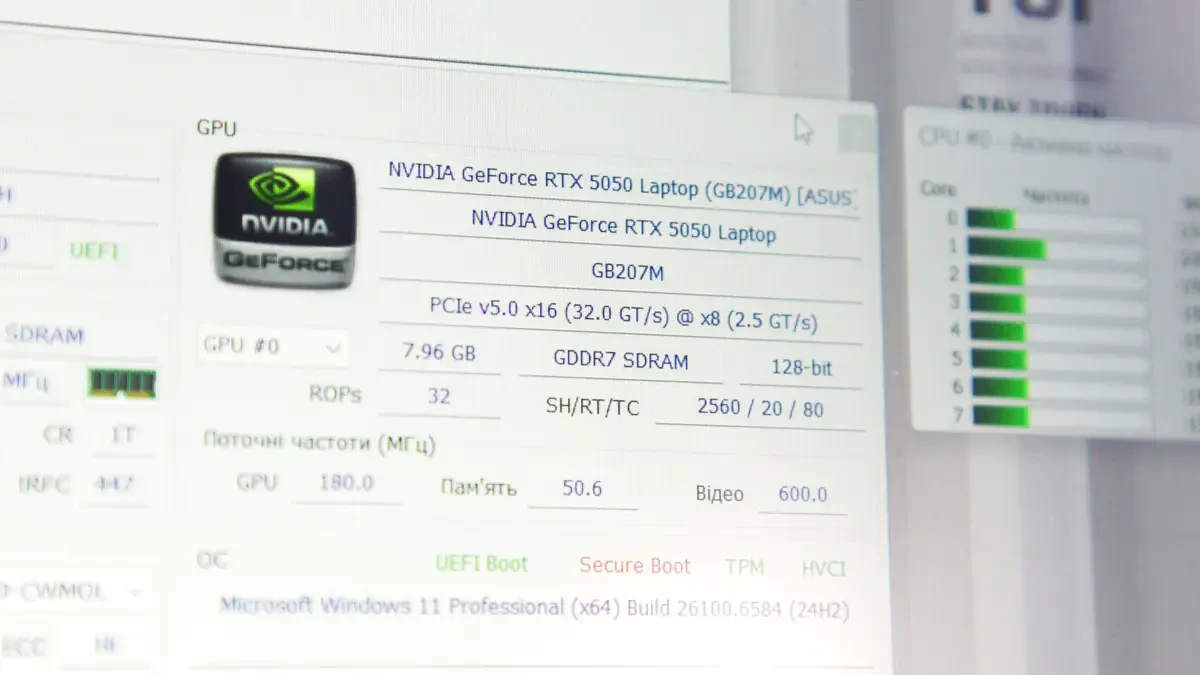ASUS TUF Gaming A16 2025: Durable gaming laptop, 14-hour battery life
ASUS TUF Gaming A16 2025 FA608UH combines performance from RTX 5050 graphics card and military-grade durability, but surprises with up to 14 hours of battery life for office tasks.
The ASUS TUF Gaming A16 2025 (model number FA608UH) is redefining the mid-range gaming laptop segment with its combination of solid performance, MIL-STD-810H military-grade durability, and impressive battery life. Priced at around $1,400, the device is equipped with a new generation NVIDIA GeForce RTX 5050 GPU and AMD Ryzen 7 CPU, providing a balanced choice for both gamers and professionals who need a powerful mobile machine.

ASUS TUF Gaming A16 2025 detailed specifications
Below is a detailed configuration table of the reviewed version, providing an overview of the machine's hardware.
| Properties | Detail |
|---|---|
| Processor | AMD Ryzen 7 260 |
| Graphics card | NVIDIA GeForce RTX 5050 (Laptop), 100 W + 15 W Dynamic Boost, 8 GB GDDR7 |
| Neural Processing Unit (NPU) | AMD XDNA NPU up to 16 TOPS |
| Screen | 16 inch, FHD+ (1920×1200), 16:10 ratio, IPS-level, 165 Hz, 100% sRGB, G-Sync, MUX Switch, NVIDIA Advanced Optimus |
| RAM | 2 DDR5 SO-DIMM slots (supports up to 64 GB) |
| Storage | 2 M.2 PCIe 4.0 slots |
| Connection port | 1x Combo 3.5 mm, 1x HDMI 2.1 FRL, 2x USB 3.2 Gen 2 Type-A, 1x USB4 Type-C, 1x USB 3.2 Gen 2 Type-C, 1x USB 2.0 Type-A, 1x RJ45 |
| Webcam | 1080p FHD, Windows Hello support |
| Wireless connection | Wi-Fi 6E (2x2), Bluetooth 5.3 |
| Battery | 90 Wh, 4S1P, Li-Ion |
| Power supply | 240 W |
| Weight | 2.2 kg |
| Size | 35.40 × 26.90 × 1.79 ~ 2.57 cm |
Real-world performance: Powered by Zen 4 CPUs and RTX 50-series GPUs
At the heart of the TUF Gaming A16 is the AMD Ryzen 7 260 processor, built on the Zen 4 architecture and 4nm process. With 8 cores and 16 threads, a maximum clock speed of 5.1 GHz and a TDP of 80W, this CPU delivers strong multitasking performance, able to sustain a frequency of 4.8 GHz on all cores when running heavy tasks.
In terms of graphics, the machine uses the NVIDIA GeForce RTX 5050 laptop version with a capacity of up to 115 W (including 15 W Dynamic Boost). It is worth noting that the performance of a mobile GPU depends more on the power delivered (TDP) than the name. An RTX 5050 with a TDP of 100 W can deliver equivalent or even higher performance than an RTX 5070 limited to 50 W in a thinner and lighter chassis.

This mobile version of the RTX 5050 also comes with 8 GB of GDDR7 memory on a 128-bit bus, providing a bandwidth of 384 GB/s, about 20% higher than the desktop version using GDDR6 memory. This helps the GPU handle graphics tasks more efficiently.
165Hz display and gaming experience
ASUS TUF Gaming A16 is equipped with a 16-inch FHD+ (1920x1200) display with a 165Hz refresh rate, providing smooth images in high-speed games. The display has 100% sRGB color coverage, ensuring true colors for both gaming and creative work. G-Sync, MUX Switch and Advanced Optimus technology eliminate screen tearing and optimize graphics performance.
Military-grade durability and cooling system
True to its name TUF (The Ultimate Force), this laptop meets the MIL-STD-810H military durability standard, capable of withstanding impact, vibration and harsh environmental conditions. The chassis measures 35.40 × 26.90 cm and weighs 2.2 kg, which is relatively large compared to thin and light models, but is an advantage for the cooling system, helping the internal components operate stably at high performance without overheating.

Surprise Highlight: 14-Hour Battery for a Gaming Laptop
One of the most outstanding advantages of the TUF Gaming A16 is battery life. Thanks to the 90 Wh battery and the optimization of the AMD CPU, the device can operate continuously for about 14 hours with office tasks in the PCMark Office test at 50% screen brightness. This is an impressive number, on par with many ultrabook models specialized for work without a separate graphics card.
Points to consider
Despite being a good product, the TUF Gaming A16 still has a few minor drawbacks. The power button feels a bit loose and the location of the indicator lights is inconvenient to use. Most regrettably, the USB4 port, despite its data transfer speed of up to 40 Gbps, does not support charging via the Type-C (Power Delivery) port. This is inconvenient when users expect a more comprehensive connection standard on a modern communication port.


